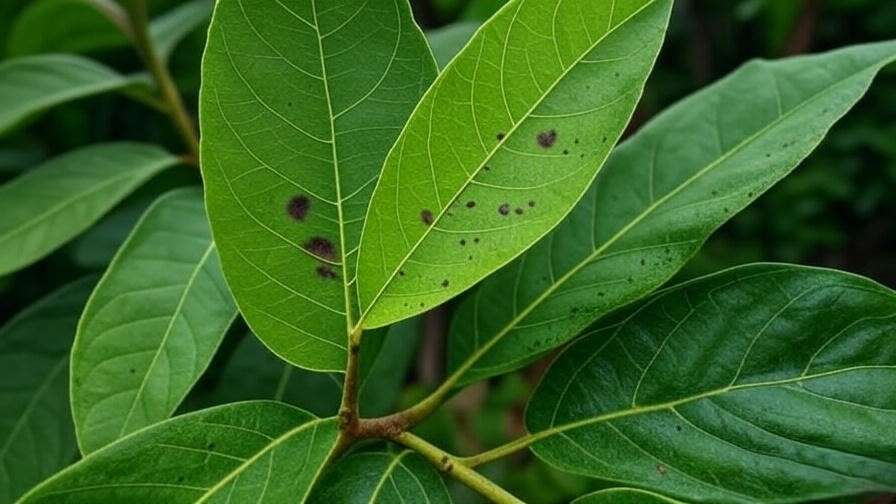Imagine a majestic balete tree towering in your garden, its sprawling branches and aerial roots creating a breathtaking tropical oasis. Known for its striking beauty and cultural significance, the balete tree (Ficus species, often Ficus balete) is a favorite among plant enthusiasts, but caring for it requires know-how. Whether you’re a beginner or a seasoned gardener, this guide will equip you with expert tips to ensure your balete tree thrives. From planting to pest control, we’ll cover everything you need to grow a healthy, vibrant balete tree that enhances your space and connects you to nature. 🌳
This comprehensive guide draws on decades of botanical expertise and regional knowledge, particularly from the Philippines, where balete trees hold ecological and spiritual importance. Expect practical, actionable advice to address common challenges and unlock the full potential of your balete tree. Let’s dive in! 🌟
1. Understanding the Balete Tree: Origins and Characteristics 🌳
1.1 What Is a Balete Tree? 🧐
The balete tree, a member of the Ficus genus, is a large, evergreen fig tree native to Southeast Asia, with a strong presence in the Philippines. Often called a “strangler fig,” it begins life as an epiphyte, growing on other trees before sending aerial roots to the ground, eventually forming a massive, intricate structure. Its glossy, dark green leaves and sprawling canopy make it a standout in any landscape.
In Filipino culture, balete trees are steeped in folklore, often associated with mystical beings like spirits or engkantos. Ecologically, they’re powerhouses, supporting biodiversity by providing habitat for birds, insects, and epiphytes. Understanding these traits helps gardeners appreciate the balete’s unique needs and plan for its long-term care.
1.2 Why Choose a Balete Tree for Your Garden? 🌟
Balete trees are more than just plants—they’re statement pieces. Their dramatic appearance, with cascading roots and lush foliage, transforms gardens into tropical havens. They offer practical benefits too: ample shade, air purification, and support for local wildlife. However, their size and invasive roots require careful planning. A mature balete can grow over 50 feet tall, with roots that spread widely, so they’re best suited for large spaces.
Expert Insight: Dr. Maria Santos, a botanist at the University of the Philippines, notes, “Balete trees are keystone species in tropical ecosystems, fostering biodiversity while adding unparalleled beauty to landscapes. Proper care ensures they thrive for generations.”
2. Planting Your Balete Tree: Getting Started Right 🌱
2.1 Choosing the Perfect Location 📍
Selecting the right spot is critical for your balete tree’s success. These trees thrive in full sun to partial shade, needing at least 4–6 hours of sunlight daily. Space is a major consideration—baletes need room for their expansive roots, so plant them at least 20–30 feet from buildings, pipes, or other structures. Soil should be well-draining and loamy, with a pH of 6.0–7.0. Test your soil beforehand to ensure it meets these conditions.
2.2 How to Plant a Balete Tree 🌿
Planting a balete tree requires precision to set it up for healthy growth. Follow these steps:
- Choose a Healthy Sapling: Select a nursery-grown balete with vibrant leaves and no signs of pests or disease.
- Prepare the Site: Dig a hole twice as wide and as deep as the root ball. Mix compost into the soil to boost nutrients.
- Plant Carefully: Place the sapling in the hole, ensuring the root collar is level with the ground. Backfill with soil and tamp gently.
- Water Thoroughly: Soak the area to settle the soil and encourage root establishment.
- Mulch: Add a 2–3 inch layer of organic mulch (e.g., wood chips) to retain moisture and deter weeds.

Plant in the early wet season (May–June in tropical climates) for optimal root growth. Avoid waterlogged areas to prevent root rot.
Pro Tip: Create a planting checklist: ☑ Healthy sapling, ☑ Proper spacing, ☑ Soil test, ☑ Compost, ☑ Mulch. This ensures no step is missed! 📋
3. Essential Care Tips for a Thriving Balete Tree 🌞
3.1 Watering Requirements 💧
Balete trees need consistent but not excessive watering. Young trees require deep watering once or twice weekly, delivering 1–2 inches of water to encourage deep roots. Mature trees are more drought-tolerant but benefit from supplemental watering during dry spells. Adjust based on seasons: reduce watering in rainy months and increase during hot, dry periods.
Watch for signs of trouble:
- Overwatering: Yellowing leaves, soggy soil, or root rot.
- Underwatering: Wilting leaves or dry, cracked soil.
Use a moisture meter for precision, especially in the first year.
3.2 Fertilizing for Vibrant Growth 🌱
Fertilizing supports the balete’s rapid growth and lush foliage. Apply a balanced, slow-release fertilizer (10-10-10 NPK) every 2–3 months during the growing season (spring to early fall). Spread it evenly around the drip line, avoiding direct contact with the trunk. For eco-conscious gardeners, organic options like composted manure or fish emulsion work well.
Over-fertilizing can burn roots, so follow package instructions carefully. A soil test every 1–2 years ensures nutrient levels are balanced.
3.3 Pruning and Shaping ✂️
Pruning keeps your balete tree healthy and aesthetically pleasing. Focus on:
- Removing Dead or Damaged Branches: Prevents disease spread.
- Controlling Size: Trim to manage height or spread in smaller spaces.
- Shaping Aerial Roots: Guide roots for visual appeal or to avoid obstacles.
Prune in late winter or early spring before new growth begins. Use clean, sharp tools to make clean cuts at a 45-degree angle. For aerial roots, trim sparingly to maintain the tree’s unique character.

Example: To prune aerial roots, identify those touching the ground unnecessarily. Cut just above the soil line, leaving enough for structural support. This keeps your garden tidy without harming the tree.
4. Managing Balete Tree Challenges: Pests, Diseases, and More 🐛
4.1 Common Pests and How to Handle Them 🕷️
Balete trees can attract pests like scale insects, mealybugs, and aphids. These sap-suckers weaken foliage and stunt growth. Combat them with:
- Neem Oil: A natural pesticide; apply every 7–10 days until pests are gone.
- Insecticidal Soap: Safe for foliage; spray directly on affected areas.
- Natural Predators: Encourage ladybugs or lacewings, which eat aphids.
Regularly inspect leaves and stems, especially in humid conditions, to catch infestations early.
4.2 Diseases to Watch For 🦠
Balete trees are hardy but susceptible to:
- Root Rot: Caused by overwatering or poor drainage. Symptoms include mushy roots and wilting. Treat by improving drainage and reducing watering.
- Leaf Spot: Fungal infections causing dark spots on leaves. Apply a copper-based fungicide and remove affected leaves.
Ensure good air circulation by spacing plants properly and pruning dense foliage.

4.3 Managing Invasive Roots 🌳
Balete tree roots can damage structures if not managed. Install root barriers (plastic or metal sheets buried 2–3 feet deep) around planting areas to redirect growth. Monitor roots annually, especially near homes or sidewalks. For large trees, consult a certified arborist to assess root spread and recommend solutions.
Case Study: In Quezon City, a homeowner planted a balete 30 feet from their house and installed a root barrier. Ten years later, the tree thrives without damaging nearby structures, proving proactive planning works.
5. Balete Tree Maintenance for Long-Term Success 🌿
5.1 Seasonal Care Tips 📅
To keep your balete tree thriving year-round, tailor your care to the seasons:
- Spring: Kickstart growth with fertilizer and light pruning. Check for pests as new shoots emerge.
- Summer: Water deeply during dry spells and monitor for leaf stress. Apply mulch to retain soil moisture.
- Fall: Reduce watering as temperatures cool. Add a 3–4 inch layer of mulch to insulate roots.
- Winter: In tropical climates, maintain minimal watering. In cooler regions, protect young trees with burlap wraps if frost is a concern.
Regular maintenance ensures your balete remains healthy and resilient, no matter the season.
5.2 Supporting Mature Balete Trees 🌴
Mature balete trees, which can live for centuries, require ongoing care to stay structurally sound. For heavy branches, install stakes or cables to prevent breakage during storms. Conduct soil tests every 1–2 years to monitor nutrient levels and adjust fertilization as needed. Plan for the tree’s long-term impact—its canopy and roots will expand significantly over decades.
Consulting a local agricultural extension or arborist can provide region-specific advice, especially in areas like the Philippines where balete trees are common. Their expertise ensures your tree remains a garden centerpiece for generations.
Expert Tip: For mature trees, schedule an annual inspection with a certified arborist to assess structural integrity and root health. This proactive step prevents costly damage. 🌳

6. Balete Trees in Containers: Is It Possible? 🪴
Growing a balete tree in a container is challenging but feasible with smaller varieties, such as dwarf Ficus species. Containers allow flexibility for patios, balconies, or indoor spaces, but they demand extra care. Choose a large pot (at least 18–24 inches in diameter) with excellent drainage holes. Use a well-draining potting mix, such as one part loam, one part sand, and one part compost.
Container-grown baletes need:
- Frequent Watering: Check soil daily; water when the top inch feels dry.
- Regular Fertilization: Apply a liquid fertilizer monthly during the growing season.
- Repotting: Every 2–3 years to accommodate root growth.
Pros: Mobility and suitability for small spaces.
Cons: Limited growth potential and higher maintenance needs.
Reader Tip: Try Ficus microcarpa for container gardening—it’s a compact relative of the balete with similar aesthetics but easier to manage indoors. 🌱
7. Cultural and Environmental Significance of Balete Trees 🌍
Balete trees are more than plants—they’re cultural icons, especially in the Philippines. In folklore, they’re believed to house spirits or engkantos, making them both revered and feared. Stories of ancient baletes, like the famous tree in Siquijor, draw tourists and locals alike, blending mystique with natural beauty.
Ecologically, balete trees are vital. Their canopies shelter birds, bats, and insects, while their fruit supports wildlife. Epiphytes, like orchids and ferns, often grow on their branches, creating micro-ecosystems. Conservation efforts, such as those by the Philippine Native Plants Conservation Society, aim to protect balete populations from deforestation and urban expansion.
Engaging Element: In a small barangay in Luzon, a 200-year-old balete tree stands as a community landmark. Locals gather beneath it for festivals, believing it brings good fortune. Planting a balete in your garden connects you to this rich cultural and ecological legacy. 🌟

8. FAQs About Balete Tree Care ❓
Q1: How fast do balete trees grow?
Answer: In ideal conditions (ample sunlight, rich soil, and regular care), balete trees grow 2–3 feet per year. Growth slows in poor soil or shaded areas.
Q2: Are balete trees dangerous for homes?
Answer: Their invasive roots can damage foundations or pipes if planted too close to structures. Maintain a 20–30 foot buffer and consider root barriers for safety.
Q3: Can I propagate a balete tree at home?
Answer: Yes! Use stem cuttings or air layering. For cuttings, take a 6–8 inch stem with leaves, dip in rooting hormone, and plant in moist soil. Keep it warm and humid for 4–6 weeks until roots form.
Q4: What’s the lifespan of a balete tree?
Answer: With proper care, balete trees can live for centuries. The famous Balete Tree in Canlaon City, Philippines, is estimated to be over 1,300 years old, showcasing their longevity.
SEO Note: These FAQs target long-tail keywords like “how fast does a balete tree grow” and “is a balete tree dangerous,” boosting search visibility.
Conclusion: Grow Your Balete Tree with Confidence! 🌟
Caring for a balete tree is a rewarding journey that blends horticultural skill with cultural appreciation. By choosing the right location, watering and fertilizing thoughtfully, managing pests, and planning for root growth, you’ll cultivate a thriving tree that enhances your garden and supports local ecosystems. Whether you’re drawn to its lush foliage or its storied place in folklore, your balete tree can become a legacy for future generations.
Start your balete tree journey today! Share your progress in the comments, ask questions, or connect with fellow gardeners on social media. For further reading, explore our articles on tropical tree care or soil health. With the right care, your balete tree will flourish, bringing beauty and biodiversity to your space. 🌿













